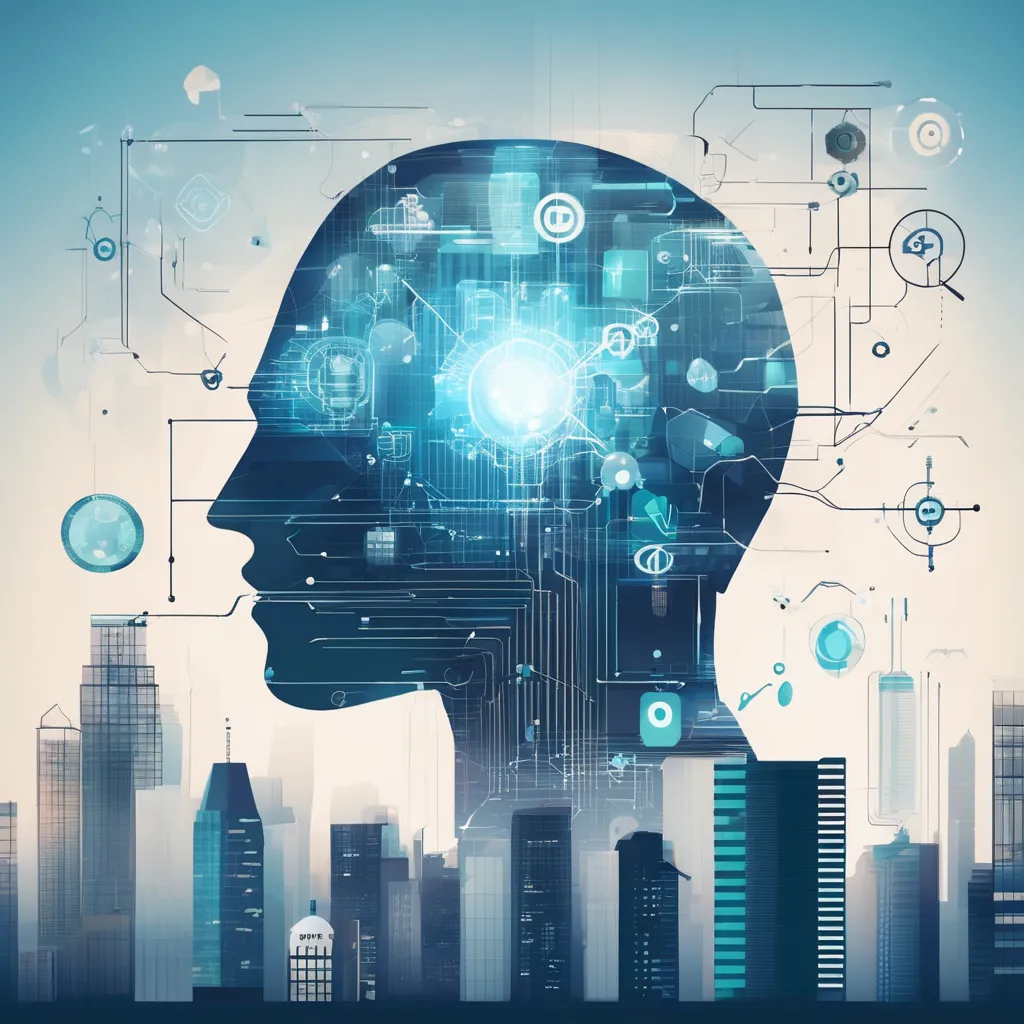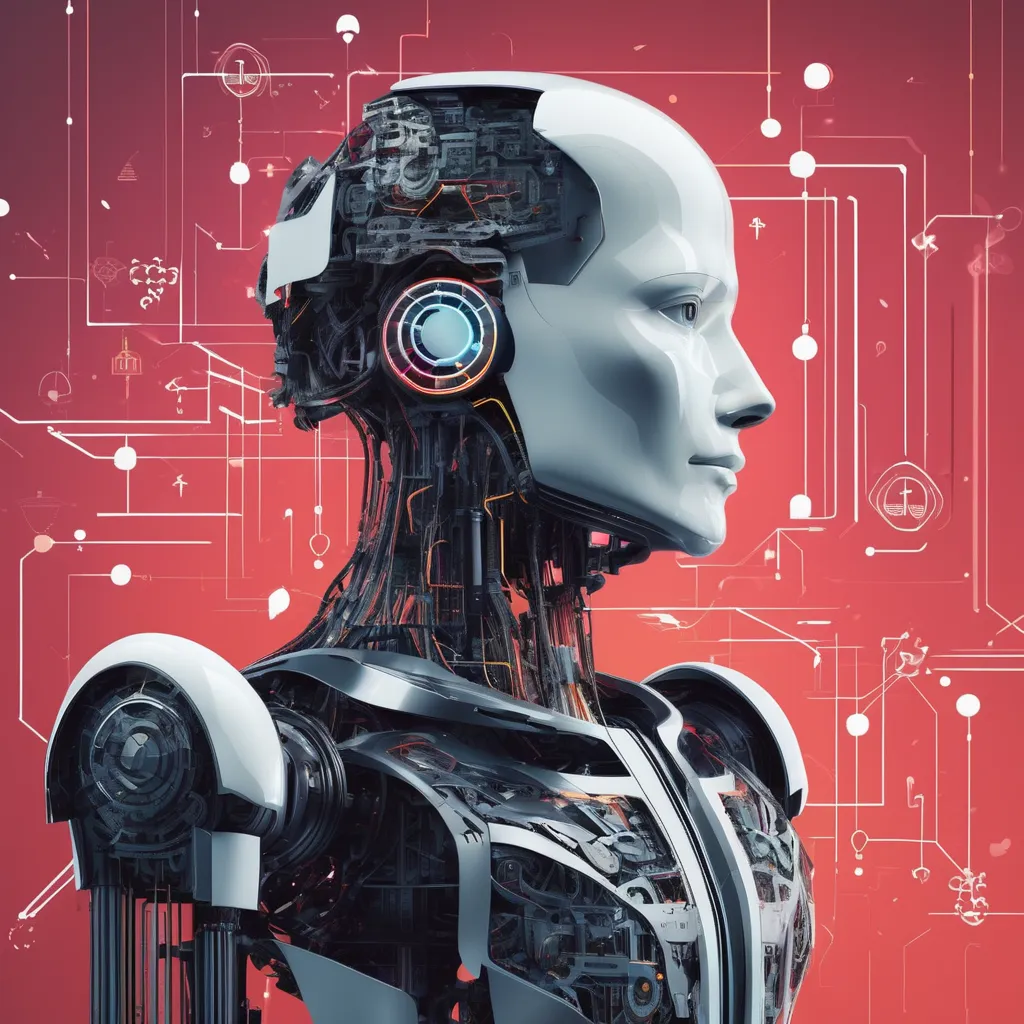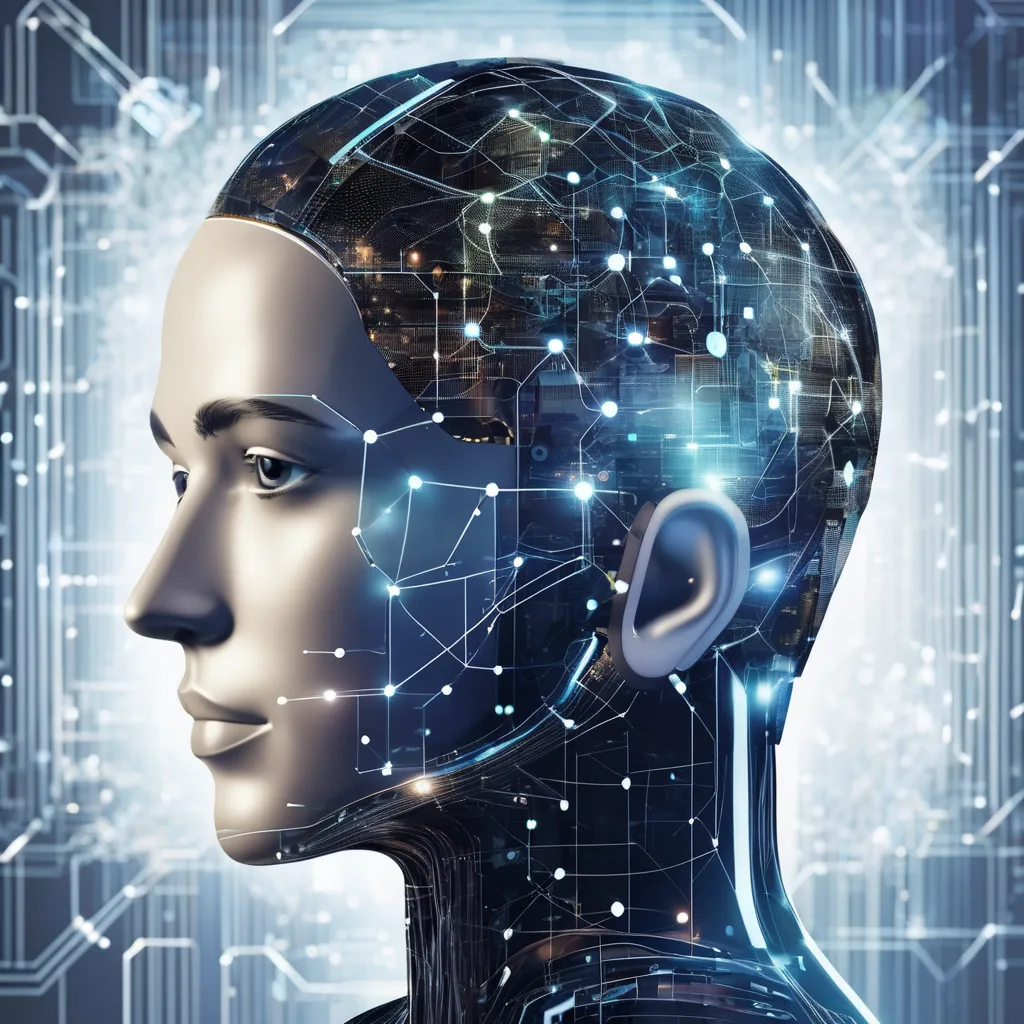Exploring the Hidden Dangers of Malicious AI and How to Combat Them
Welcome to ITEACH.TOP! In a rapidly evolving digital age, artificial intelligence (AI) presents unparalleled opportunities and challenges. This article delves into the uncharted territories of malicious AI, examining its threats, implications, and strategies for defense. Our mission is to equip you with the knowledge and tools necessary to navigate and mitigate the dangers of malicious AI.
Understanding the Basics: What is Malicious AI?
Artificial intelligence (AI) has revolutionized many sectors, enhancing efficiency and innovation. However, its misuse poses significant threats. Malicious AI refers to the intentional exploitation of AI systems to cause harm, ranging from cyberattacks to misinformation campaigns. Malicious actors leverage AI to circumvent traditional security measures and manipulate data to their advantage.
The core of malicious AI lies in its ability to learn and adapt. Through machine learning, AI systems can autonomously improve their attacks. This adaptive nature makes it challenging to predict and counteract malicious activities. Furthermore, the opacity of complex AI models, often referred to as “black box” mechanisms, obscures the decision-making process, complicating detection efforts.
AI’s dual-use nature means that tools developed for benign purposes can be repurposed for nefarious activities. Hence, understanding the fundamental principles of AI and its potential vulnerabilities is crucial for developing effective defense mechanisms. Comprehensive knowledge of AI’s capabilities and limitations forms the baseline for anticipating and mitigating its malicious applications.
The Rise of Malicious AI: An Emerging Threat
The proliferation of AI technologies has inevitably led to their exploitation by malicious entities. As AI becomes more accessible, cybercriminals have increasingly integrated it into their arsenals. This trend underscores the urgency of addressing the emerging threat of malicious AI.
In recent years, there have been numerous reports of AI-driven cyberattacks, illustrating the sophistication and effectiveness of these methods. For instance, AI-generated phishing emails are becoming harder to distinguish from legitimate communications, substantially increasing the likelihood of successful attacks. The rise of deepfake technology adds another layer of complexity, enabling malicious actors to create highly convincing forgeries of audio and visual content.
The autonomous nature of AI exacerbates these threats. Malicious systems can operate without human intervention, continuously refining their strategies. This self-sufficiency heightens the risk, as these systems can exploit vulnerabilities at an unprecedented scale and speed. The combination of advanced capabilities and autonomy makes malicious AI a formidable adversary.
Examples of Malicious AI in Today’s World
Malicious AI manifests in various forms across different sectors. In cybersecurity, AI-driven malware and ransomware are increasingly common. These programs adapt to defenses, ensuring their persistence within targeted systems. Financial institutions are frequently targeted, with AI being used to manipulate trading algorithms and commit fraud.
In the realm of disinformation, AI-generated deepfakes pose substantial risks. From fabricated political speeches to fake news stories, deepfakes can sow discord and erode public trust. Social media platforms are particularly vulnerable, as AI can be used to create and disseminate false narratives on a massive scale.
Another notable example is industrial espionage, where AI is employed to infiltrate company networks, steal intellectual property, and disrupt operations. The healthcare sector is also at risk, with AI being used to manipulate medical records or launch ransomware attacks on hospitals. The versatility and pervasiveness of AI underscore the importance of vigilance across all domains.

The Role of Cybersecurity in Mitigating Malicious AI
Cybersecurity is the frontline defense against malicious AI. Traditional security measures are often inadequate, necessitating the development of new strategies and tools specifically tailored to counteract AI-driven threats. Proactive defense mechanisms, continuous monitoring, and adaptive responses are critical to staying ahead of malicious actors.
One approach involves leveraging AI for defensive purposes. AI-powered security systems can detect unusual patterns and anomalies, indicating potential malicious activities. These systems can autonomously respond to threats, neutralizing them before they cause significant damage. However, reliance on AI also introduces risks, as these systems themselves can be targeted and exploited.
Collaboration between cybersecurity experts and AI developers is essential. By sharing knowledge and resources, they can create robust defenses against malicious AI. Regularly updating security protocols, conducting thorough risk assessments, and fostering a culture of continuous improvement are key components of an effective cybersecurity strategy.
How Malicious AI Exploits Vulnerabilities in Systems
Malicious AI exploits systemic vulnerabilities to achieve its objectives. These vulnerabilities can be technical, such as unpatched software or weak encryption, or human, such as social engineering or insider threats. Understanding these weaknesses is paramount to developing effective countermeasures.
One common tactic is exploiting zero-day vulnerabilities, which are flaws in software that are unknown to the vendor. Malicious AI can rapidly identify and exploit these vulnerabilities before patches are released. Additionally, AI can be used to mimic legitimate user behavior, evading detection by traditional security systems.
Human factors are equally critical. Social engineering attacks, such as phishing, exploit psychological vulnerabilities. Malicious AI can generate highly personalized and convincing phishing emails, increasing the success rate of these attacks. Furthermore, insider threats, where employees are unwittingly or intentionally compromised, represent another vector for malicious AI exploitation.
AI-Driven Social Engineering Attacks: What You Need to Know
Social engineering attacks seek to manipulate individuals into divulging confidential information or performing actions that compromise security. AI significantly enhances the effectiveness of these attacks by personalizing them to the target. Using data mining techniques, AI can gather and analyze vast amounts of information about potential victims, crafting bespoke phishing emails and messages.
AI’s ability to simulate human behavior complicates detection. For example, AI chatbots can engage in convincing conversations with victims, gradually extracting sensitive information. Additionally, machine learning algorithms can predict human responses, tailoring the attack in real-time to maximize success.
Awareness and education are essential to combat AI-driven social engineering. Individuals must be trained to recognize and respond to these sophisticated attacks. Organizations should implement multi-factor authentication and other security measures to reduce the risk of compromise. By understanding the nature of AI-driven social engineering, individuals and organizations can better protect themselves against these insidious threats.

The Impact of Deepfakes and Misinformation Campaigns
Deepfakes and misinformation campaigns represent some of the most visible and concerning applications of malicious AI. These technologies can create highly realistic but entirely fabricated audio and visual content, undermining trust in media and public institutions. The potential for deepfakes to disrupt elections, harm reputations, and incite violence is significant.
The spread of misinformation is accelerated by AI-driven bots on social media platforms. These bots can generate, share, and amplify false narratives at an unprecedented scale. The rapid dissemination of misinformation makes it challenging for fact-checkers and authorities to keep up, allowing falsehoods to gain traction.
Combating deepfakes and misinformation requires a multifaceted approach. Technological solutions, such as deepfake detection algorithms, are critical but must be coupled with human oversight. Public awareness campaigns and media literacy programs are also essential to educate individuals on identifying and responding to misinformation. Collaboration between technology companies, governments, and civil society is vital to address this complex issue effectively.
Securing Your Data: Key Strategies to Protect Against Malicious AI
Data security is a cornerstone of defense against malicious AI. Protecting personal and organizational data reduces the tools available to malicious actors. Implementing robust data encryption, regularly updating software, and enforcing strict access controls are fundamental strategies.
Organizations should perform regular security audits to identify and remediate potential vulnerabilities. Maintaining up-to-date threat intelligence allows for the timely detection of emerging threats. Additionally, employing AI-driven security solutions can help identify and respond to anomalies in real-time.
Data privacy is also a crucial consideration. Protecting data from unauthorized access not only secures it against malicious AI but also complies with regulatory requirements. Implementing data anonymization techniques and minimizing data collection to what is absolutely necessary can also mitigate risks. A comprehensive approach to data security is essential to defend against the multifaceted threats posed by malicious AI.
Ethical Considerations in the Development of AI Technologies
As AI continues to advance, ethical considerations become increasingly important. Developers and policymakers must ensure that AI technologies are designed and deployed responsibly, minimizing the risk of misuse. Transparent and accountable AI development processes are critical to maintaining public trust.
One ethical concern is the potential for AI to perpetuate and amplify biases. Biased AI systems can inadvertently reinforce existing social inequalities, leading to unfair or discriminatory outcomes. Ensuring diversity in AI development teams and rigorously testing algorithms for bias are key steps in addressing this issue.
Another ethical challenge is the potential for AI to be weaponized. The dual-use nature of AI means that technologies developed for beneficial purposes can be repurposed for harm. Ethical guidelines and oversight mechanisms are needed to prevent the misuse of AI. Collaboration between stakeholders, including developers, ethicists, and policymakers, is essential to navigate these ethical challenges effectively.
The Role of Government in Regulating Malicious AI
Governments play a crucial role in regulating AI to prevent its malicious use. Effective regulation requires a balance between fostering innovation and ensuring public safety. Governments must develop robust legal frameworks that address the unique challenges posed by AI.
Regulations should mandate transparency and accountability in AI development. Clear guidelines on data privacy, security, and ethical standards are essential. Governments must also provide resources and support for research into AI security and defense mechanisms.
International cooperation is vital, as malicious AI poses a global threat. Collaborative efforts to standardize regulations and share threat intelligence can enhance global security. Governments, working alongside industry and academia, can develop comprehensive strategies to mitigate the risks of malicious AI effectively.
Case Studies of Malicious AI Attacks
Real-world case studies illustrate the potential devastation of malicious AI attacks. One notable example is the use of AI-driven ransomware in the healthcare sector. In 2020, hospitals globally were targeted with sophisticated ransomware attacks, disrupting operations and compromising patient care. The attackers used AI to evade detection and maximize impact.
Another case study involves the manipulation of financial markets. Malicious actors employed AI algorithms to execute high-frequency trading fraud, generating significant financial losses and undermining market stability. The autonomous nature of these AI systems allowed for continuous operation, complicating efforts to halt the attacks.
These case studies highlight the diverse applications of malicious AI and underscore the importance of proactive defense measures. By studying these incidents, organizations and policymakers can better understand the tactics and strategies employed by malicious actors and develop more effective countermeasures.
Proactive Measures to Identify Malicious AI
Identifying malicious AI requires a proactive and multi-layered approach. Continuous monitoring and analysis of network activity are essential to detect anomalies indicative of malicious activities. Leveraging AI-driven security solutions can enhance detection capabilities.
Implementing threat hunting practices, where security experts actively search for potential threats, can also identify malicious AI before it causes significant damage. Regularly updating threat intelligence and adapting security protocols to emerging threats is crucial.
Collaboration and information sharing between organizations are vital. Establishing industry-wide standards and best practices for detecting and mitigating malicious AI can enhance collective security. Proactive measures, combined with a robust security culture, can significantly reduce the risk of malicious AI exploits.
The Importance of AI Literacy in Combatting Malicious AI
AI literacy is fundamental to combating malicious AI. Educating individuals and organizations about the capabilities and risks associated with AI empowers them to recognize and respond to potential threats. Training programs and resources should cover basic AI principles, common attack vectors, and best practices for security.
Promoting AI literacy also involves raising awareness about the ethical implications and societal impacts of AI. Understanding the broader context of AI development and deployment can inform more responsible and informed decision-making.
Government, industry, and educational institutions all have roles to play in promoting AI literacy. By fostering a well-informed public and workforce, societies can better defend against and mitigate the risks of malicious AI.
How to Implement Robust AI Defense Mechanisms
Implementing robust AI defense mechanisms requires a comprehensive strategy that integrates technology, policy, and human factors. AI-driven security solutions capable of detecting and responding to threats in real-time should be employed. Regularly updating these systems and ensuring their resilience against attack is crucial.
Security policies must be adaptive and forward-looking, anticipating potential threats and preparing accordingly. This includes regular risk assessments, implementation of best practices for cybersecurity, and compliance with regulatory requirements. Policies should also emphasize the importance of incident response and recovery.
Human factors are equally important. Training employees on security protocols and promoting a culture of vigilance can significantly enhance an organization’s defenses. Encouraging collaboration and communication between departments can also improve overall security posture. A multifaceted approach that combines technology, policy, and human factors represents the best defense against malicious AI.
Partnerships and Collaborations to Fight Malicious AI
Fighting malicious AI requires partnerships and collaborations across different sectors. Public-private partnerships can leverage the strengths of both worlds, combining governmental oversight and resources with industry innovation and agility. Collaborative research initiatives can advance the development of defensive technologies and strategies.
International cooperation is essential, given the global nature of cyber threats. Sharing threat intelligence, standardizing regulations, and conducting joint exercises can enhance global security. Organizations like the United Nations and Interpol can facilitate collaboration and coordinate international efforts against malicious AI.
Academic institutions also play a crucial role. Research in AI security, ethical considerations, and defense mechanisms can lead to innovative solutions. Collaboration between academia, industry, and government can create a comprehensive and coordinated approach to combat malicious AI.
Investing in AI Security: Best Practices for Organizations
Organizations must invest in AI security to protect themselves against malicious threats. This starts with conducting thorough risk assessments to identify potential vulnerabilities and prioritize security measures. Implementing multi-layered defenses, such as firewalls, intrusion detection systems, and AI-driven security solutions, is essential.
Regularly updating and patching software to address known vulnerabilities is a fundamental practice. Employing encryption for data at rest and in transit can protect sensitive information from unauthorized access. Access controls should be strictly enforced, ensuring that only authorized personnel have access to critical systems and data.
Employee training and awareness programs are also critical. Educating staff about the risks of malicious AI and promoting best practices for security can significantly reduce the likelihood of successful attacks. Encouraging a culture of security and vigilance can enhance overall organizational resilience.
The Future of AI: Preventing Malicious Use
The future of AI holds immense potential but also significant risks. Preventing the malicious use of AI requires forward-thinking strategies and continuous vigilance. Research and development in AI security must keep pace with advancements in AI technology.
Ethical considerations will become increasingly important. Ensuring that AI is developed and deployed responsibly can mitigate the risks of misuse. Transparent and accountable AI development processes, coupled with robust oversight mechanisms, can build public trust and prevent malicious applications.
Policy and regulation will also play a crucial role. Governments must develop and enforce regulations that address the unique challenges posed by AI. International cooperation and standardization can enhance global security and prevent the spread of malicious AI. By anticipating and addressing potential risks, societies can harness the benefits of AI while mitigating its threats.
Understanding Machine Learning Vulnerabilities
Machine learning, a core component of AI, has its own set of vulnerabilities. Adversarial attacks exploit these vulnerabilities by feeding machine learning models carefully designed inputs that cause them to malfunction. These inputs, often imperceptible to humans, can cause models to misclassify, leading to unpredictable and potentially harmful outcomes.
Model inversion attacks represent another threat. These attacks aim to reverse-engineer machine learning models to extract sensitive information about the training data. This can lead to the exposure of confidential data and privacy breaches.
Understanding these vulnerabilities is essential for developing robust machine learning models. Techniques such as adversarial training, where models are trained on both normal and adversarial examples, can enhance resilience. Regularly evaluating and updating models to address potential vulnerabilities is also crucial.
Public Awareness and Education: Fighting Malicious AI
Public awareness and education are critical components of the fight against malicious AI. Educating individuals about the risks and implications of AI can empower them to recognize and respond to threats. Public awareness campaigns can inform people about common attack vectors, such as phishing and deepfakes, and promote best practices for security.
Educational institutions have a significant role to play. Integrating AI literacy into school curricula can prepare the next generation for the challenges and opportunities of an AI-driven world. Providing resources and training for educators can enhance their ability to teach these subjects effectively.
Media literacy programs can also help individuals critically evaluate information and identify misinformation. By promoting a well-informed and vigilant public, societies can enhance their resilience against the threats posed by malicious AI.
Building a Resilient AI Ecosystem
Building a resilient AI ecosystem requires a holistic approach that integrates technology, policy, ethics, and education. Ensuring that AI systems are robust and secure by design is a foundational step. This involves incorporating security measures at every stage of the AI development lifecycle.
Policy and regulation must create a framework that balances innovation and security. Ethical guidelines and oversight mechanisms are essential to prevent misuse and build public trust. Collaboration between stakeholders, including industry, government, academia, and civil society, is vital to address the multifaceted challenges of AI security.
Education and public awareness are key to promoting a culture of vigilance and responsibility. By fostering a well-informed society and workforce, nations can better navigate the complexities of an AI-driven world. Through a comprehensive and coordinated approach, we can build a resilient AI ecosystem that harnesses the benefits of AI while mitigating its risks.
In conclusion, the potential of AI to drive innovation and transform industries is immense, but so too are the risks associated with its malicious use. By understanding these threats and implementing robust strategies for defense, we can safeguard against the dangers of malicious AI. Collaboration, education, and proactive measures are key to building a secure and resilient AI ecosystem. Explore more about the world of AI and cybersecurity on ITEACH.TOP, where learning everything empowers you to navigate the digital future confidently.
Please Don’t Forget To Leave a comment For US.








